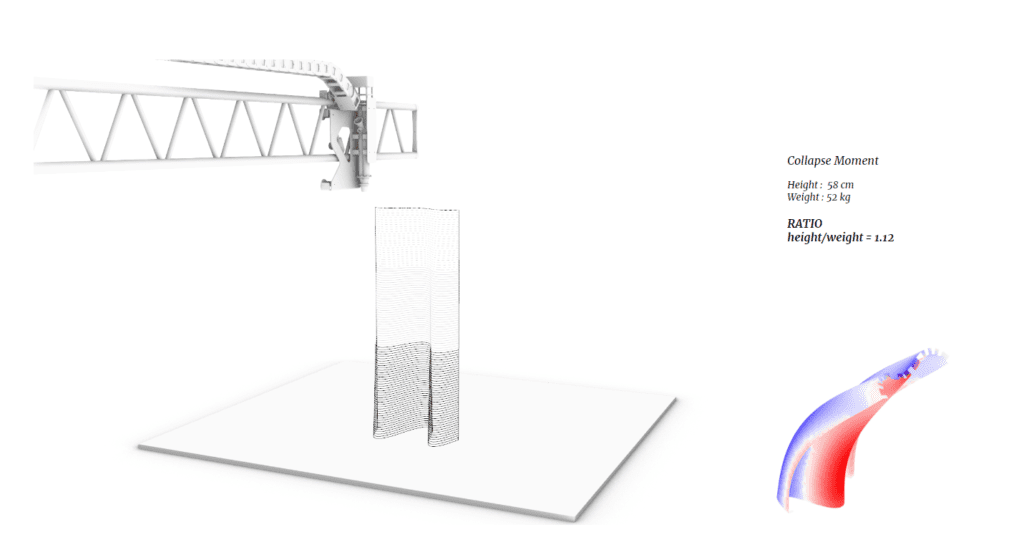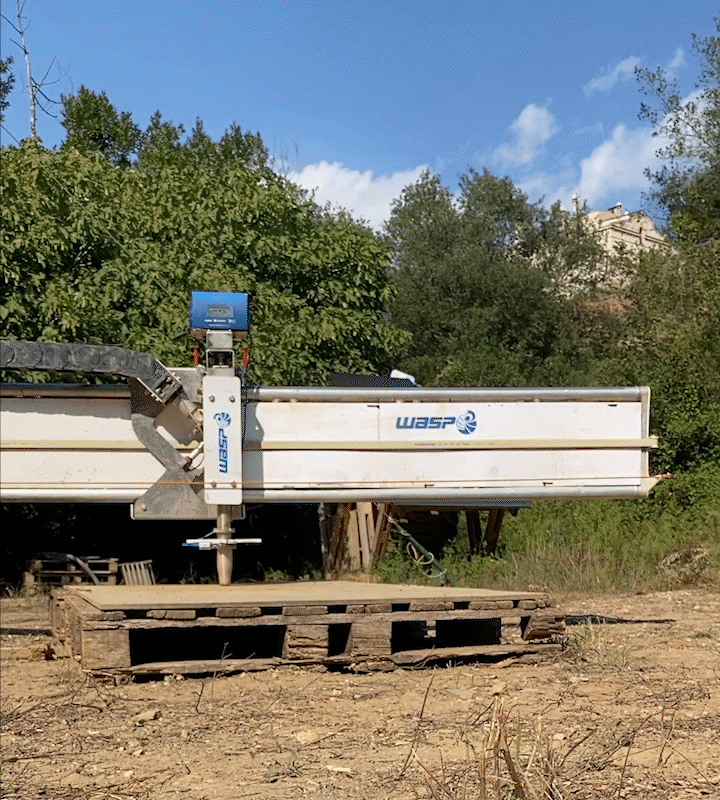
3D printing clay structure study
Team
Huanyu Li, Marina Nassif, Marta Navarro López, Dyaneshwari Mete, Ali Salamatian
Date
2022.9
Contribution
Fabrication, Tool path generation, Topology optimization
In 3d printing with earth, structural integrity is a factor that carries on from the onset of design until the finalization of the print itself. There are many tools that manifest the realization [pre-printing] and assessment [post printing] of structure in 3d printing. The purpose of these tools varies between the optimization of mass, geometry, resistance to deformation, inertia, reaction of loads, and other attributes.
Geometries that have good structural properties are designed by optimized parameters which can be many. Some of these parameters vary between inclination of the print, pattern sizes, path lengths, control points, curve widths, amplitudes…
Catalogs & Iterations
After understanding the characteristics that fail a print, a set of options were drawn and printed. The selection of seven walls was parameterized according to tool path length, edge extension, amplitude width, optimized global inertia, abundance of curves, and weight optimization.



Sample 6 from the set of 7 tests showed to be more successful but began to recline backwards due to the lack of necessary inertia in the body of the print. This requires the slight corrugation of the flat curve at the top pattern. Nevertheless, the print buckled and twisted at the 1:1 print.





The inward curve can be achieved by decreasing the number of curves, reducing and/ or increasing the control points, or simply moving the existing control points. After iterations, assessments must be conducted to facilitate the choice of a better option. Local inertia tests are one of many that attest to the durability of these edges. Here we user karamba to analyze structure properties of the geometry in terms of inertia, center of gravity, cantiliver and buckling model.
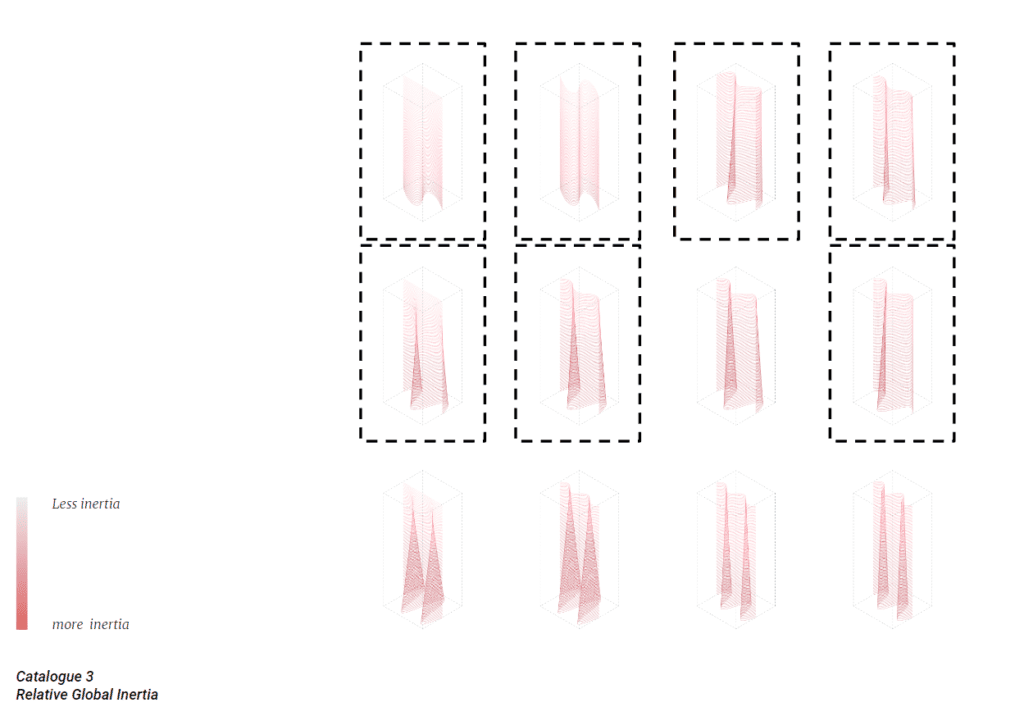

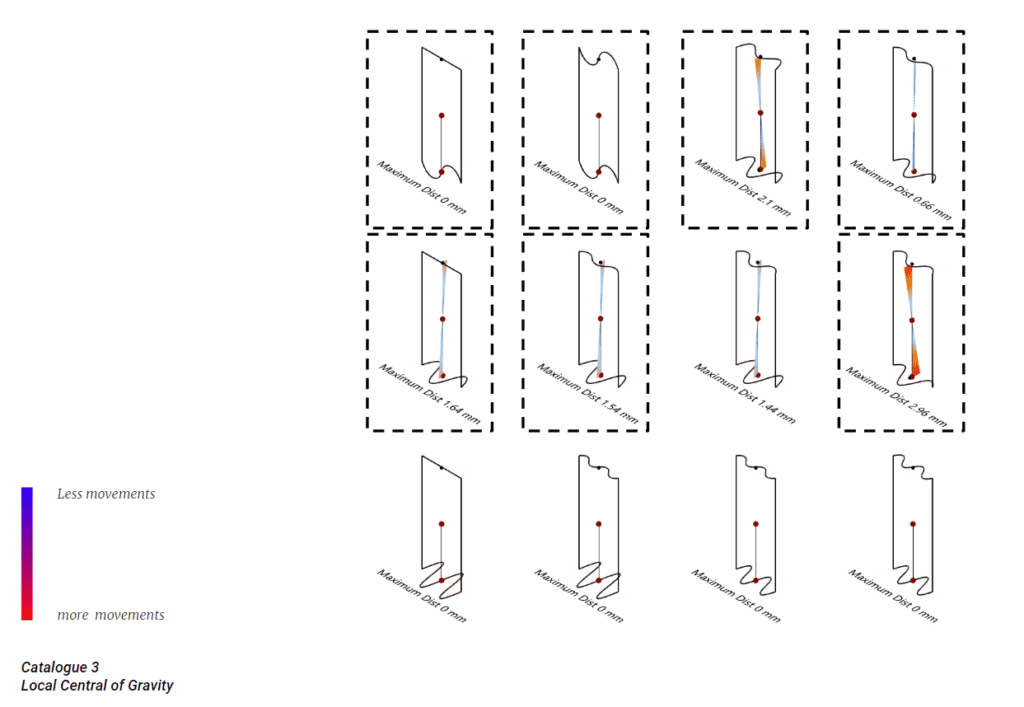





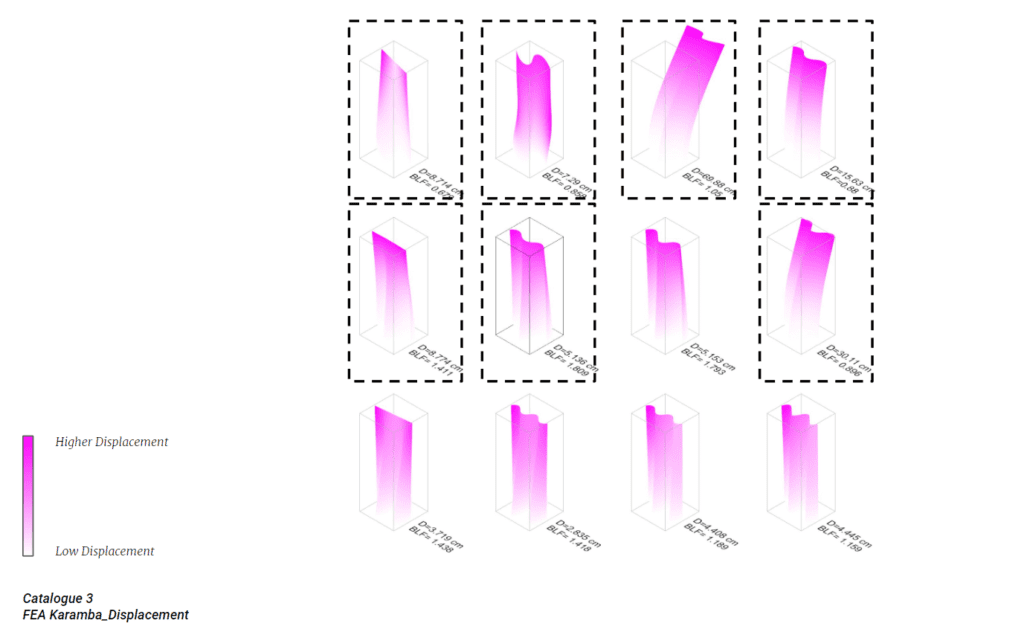

Prior to printing on the CASP crane, the structural tests that were conducted on all computational iterations in the catalog were reconducted on the final design to be tested. It experienced a slight extension of the wings on the side in order to avoid buckling. The Strength-to-Stress and displacement test revealed a displacement in some points of the print due to unbearable compression.
